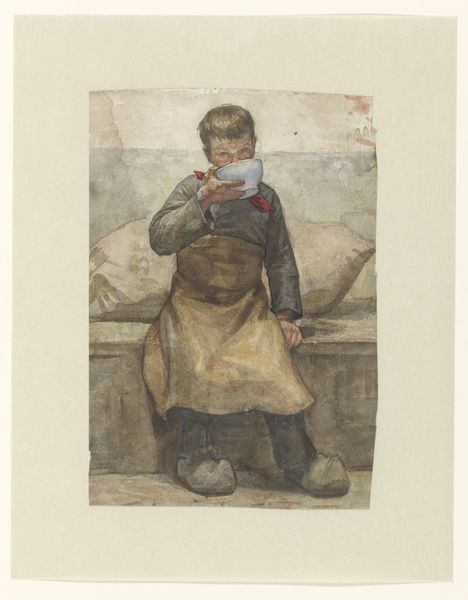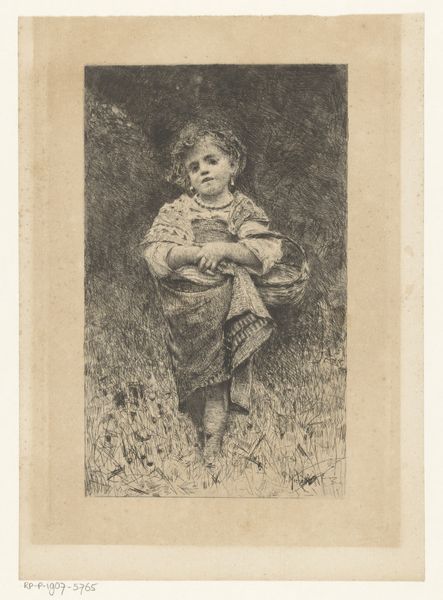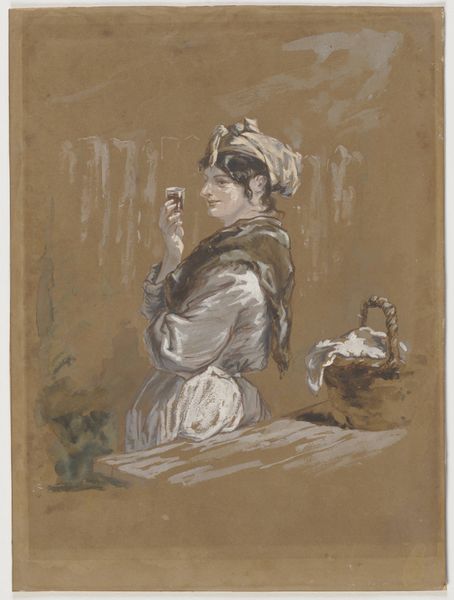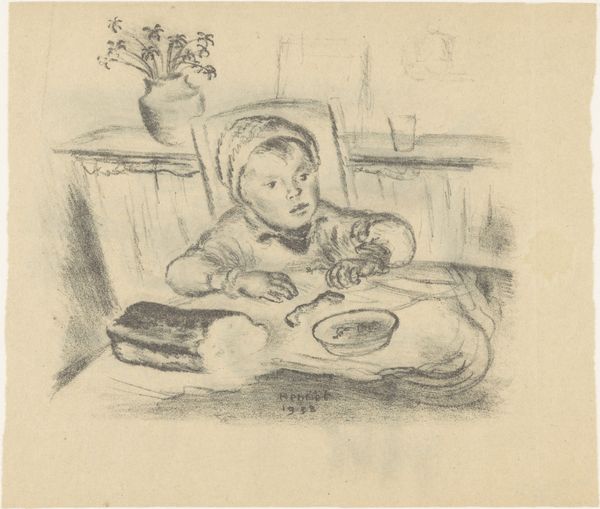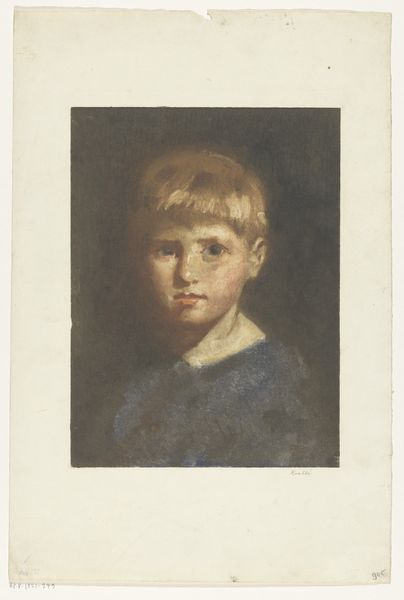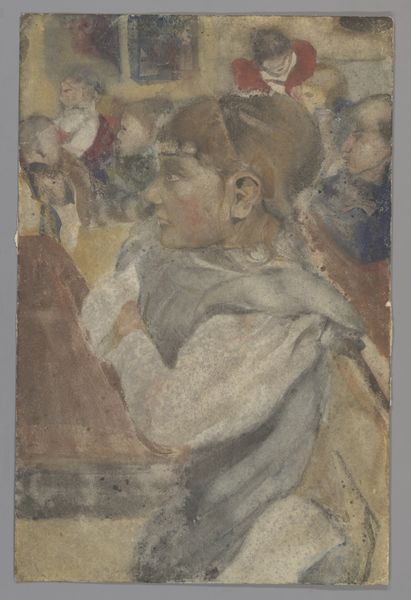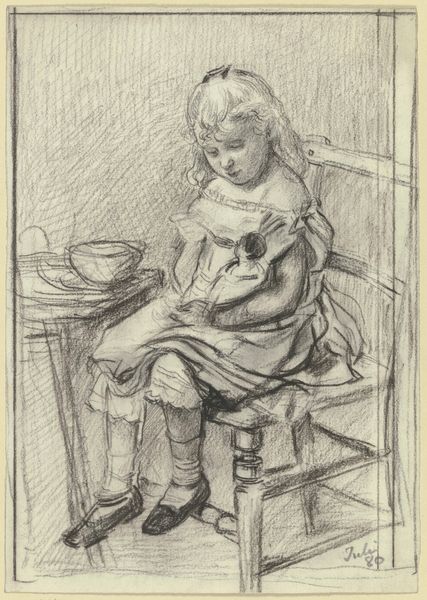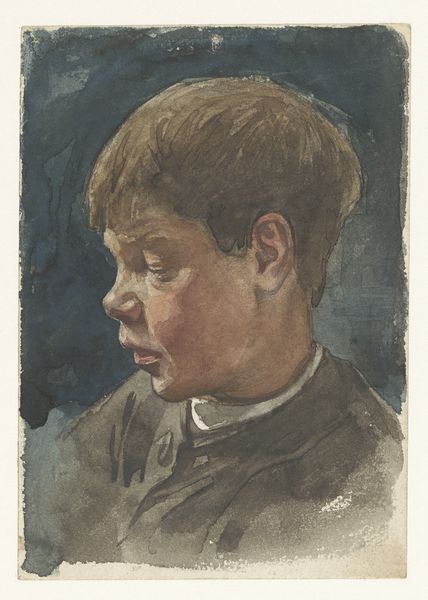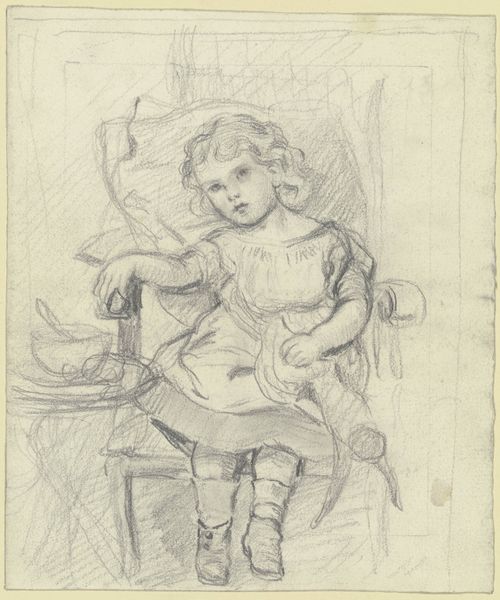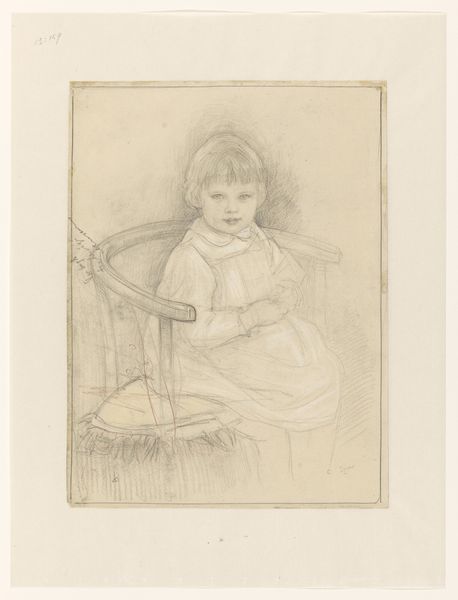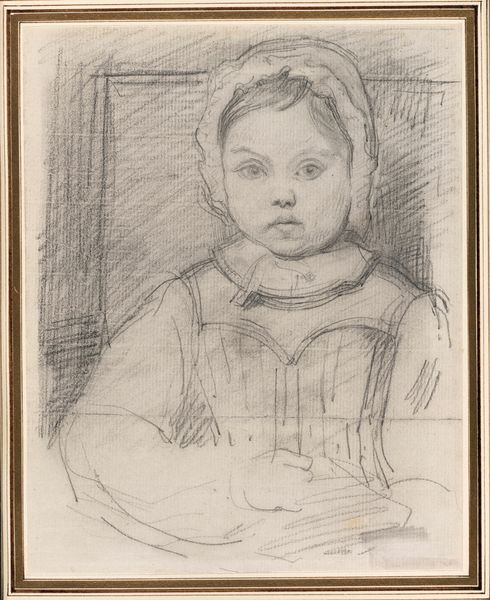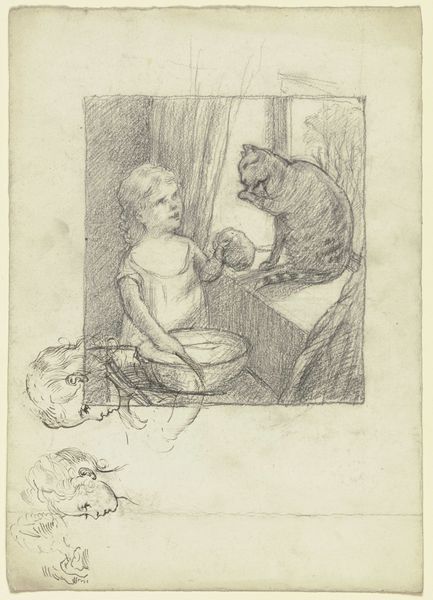
painting, watercolor
#
portrait
#
painting
#
watercolor
#
coloured pencil
#
genre-painting
#
watercolor
#
realism
Dimensions: height 455 mm, width 288 mm
Copyright: Rijks Museum: Open Domain
Curator: This watercolor piece, tentatively dated between 1874 and 1918, is called "Kinderportretje, en face," or "Child's Portrait, Frontal View," by Martinus van Andringa. Editor: The initial impression is striking—the subject’s somber gaze combined with the muted watercolor palette evokes a rather melancholic atmosphere. Curator: Yes, the restricted palette is really compelling; one has to ask why the artist chose those watery colors and how those materials may or may not have been available at the time to capture this genre scene. It certainly speaks to a tradition in children's portraiture where simplicity, a lack of embellishment and careful study of the sitter might communicate middle-class values about children being virtuous, simple, innocent beings at a remove from the industrialized adult world. Editor: The symbol of the sitter is fascinating! Given that it is a "portrait, frontal view", that indicates the work is designed to study a certain symbolic imagery on its subject. Her dress, those careful hands, the subtle, shaded background – together, these form an allegory of the time that seems ripe for decoding. She reminds me, not of one child but of many at a given moment in time. Curator: A decoding informed by material limits, I imagine! Did the artist elect this media by financial constraint, available resources? That will impact the meaning as much as anything; moreover, you've rightly noted the allegorical potential, but how might children's clothing production, or the production of watercolor pencils and paint impacted his practice. Editor: Good points. When you mentioned about what impact it might have on our perception on the subject I had in my mind whether if this picture had vivid color, do you think it still have this iconic expression like it is now? The choice and limitations of color contributes significantly to our interpretation. Curator: Precisely. I do appreciate you connecting the color choices to this icon. These economic questions help us to assess what could this symbol represented. It is truly something to behold. Editor: Agreed. This glimpse has truly enriched our appreciation of the artwork's lasting and intricate emotional appeal and complex symbology of an artistic legacy.
Comments
No comments
Be the first to comment and join the conversation on the ultimate creative platform.
